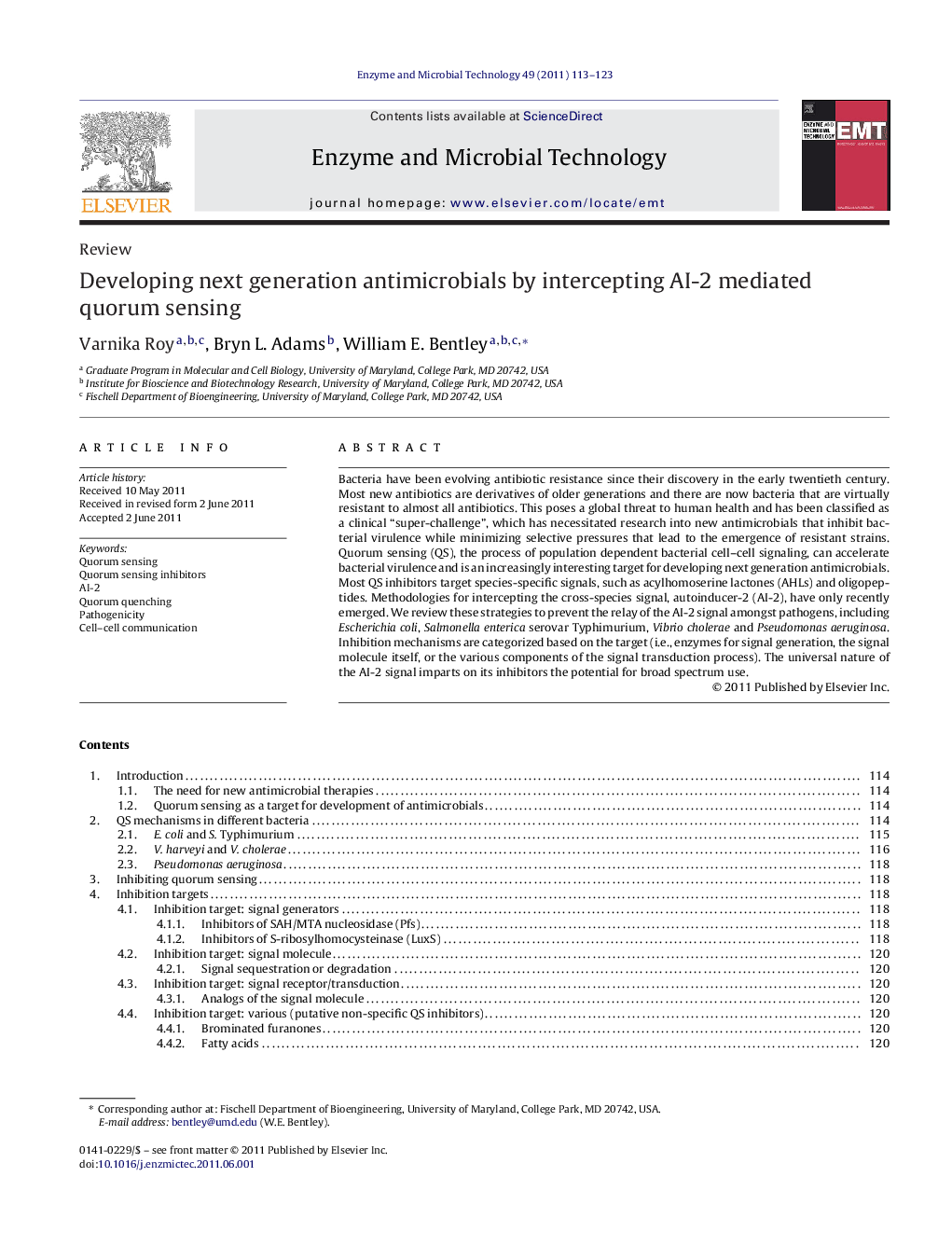| Article ID | Journal | Published Year | Pages | File Type |
|---|---|---|---|---|
| 17394 | Enzyme and Microbial Technology | 2011 | 11 Pages |
Bacteria have been evolving antibiotic resistance since their discovery in the early twentieth century. Most new antibiotics are derivatives of older generations and there are now bacteria that are virtually resistant to almost all antibiotics. This poses a global threat to human health and has been classified as a clinical “super-challenge”, which has necessitated research into new antimicrobials that inhibit bacterial virulence while minimizing selective pressures that lead to the emergence of resistant strains. Quorum sensing (QS), the process of population dependent bacterial cell–cell signaling, can accelerate bacterial virulence and is an increasingly interesting target for developing next generation antimicrobials. Most QS inhibitors target species-specific signals, such as acylhomoserine lactones (AHLs) and oligopeptides. Methodologies for intercepting the cross-species signal, autoinducer-2 (AI-2), have only recently emerged. We review these strategies to prevent the relay of the AI-2 signal amongst pathogens, including Escherichia coli, Salmonella enterica serovar Typhimurium, Vibrio cholerae and Pseudomonas aeruginosa. Inhibition mechanisms are categorized based on the target (i.e., enzymes for signal generation, the signal molecule itself, or the various components of the signal transduction process). The universal nature of the AI-2 signal imparts on its inhibitors the potential for broad spectrum use.
